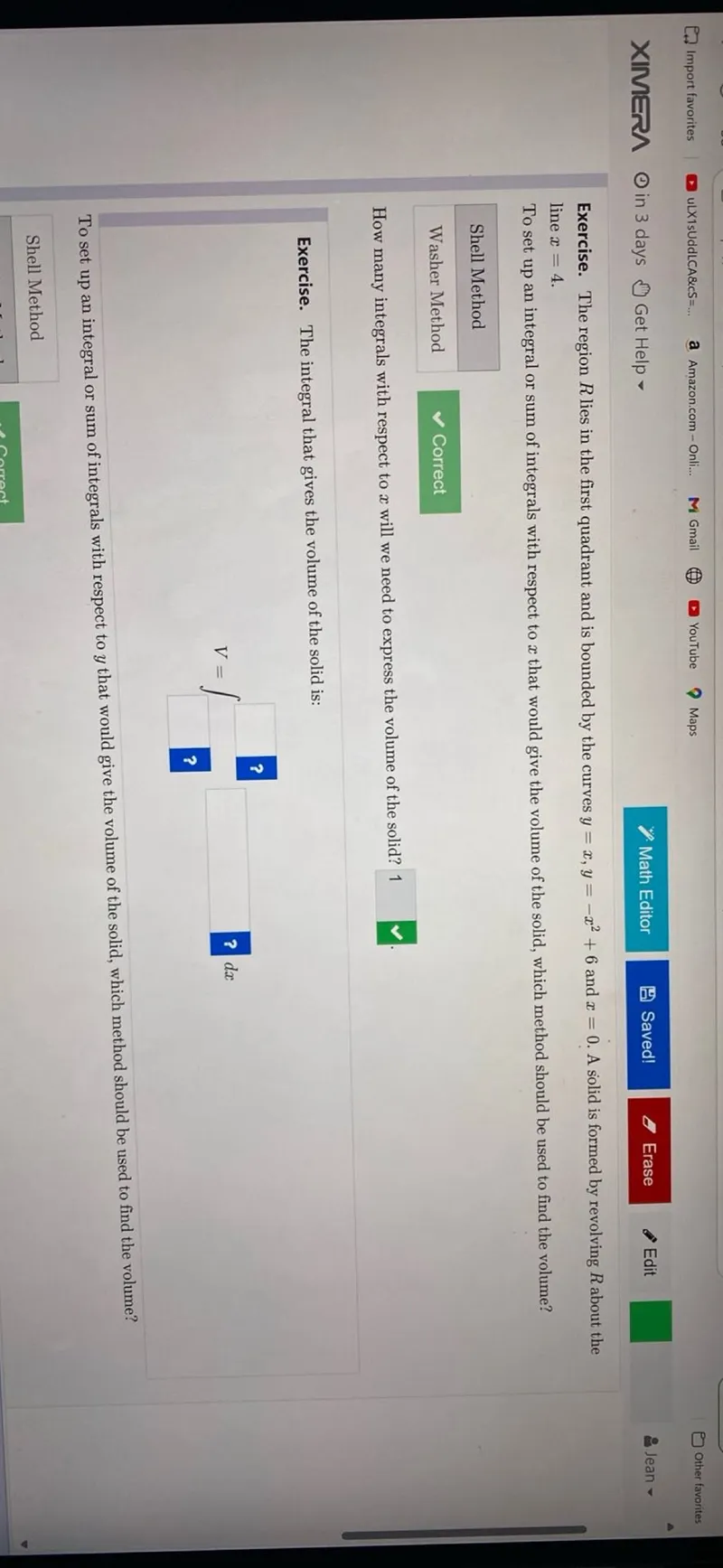Questions: Exercise. The region R lies in the first quadrant and is bounded by the curves y=x, y=-x^2+6 and x=0. A solid is formed by revolving R about the line x=4. To set up an integral or sum of integrals with respect to x that would give the volume of the solid, which method should be used to find the volume? - Shell Method - Washer Method Correct How many integrals with respect to x will we need to express the volume of the solid? 1 Exercise. The integral that gives the volume of the solid is: To set up an integral or sum of integrals with respect to y that would give the volume of the solid, which method should be used to find the volume? - Shell Method

Transcript text: Exercise. The region $R$ lies in the first quadrant and is bounded by the curves $y=x, y=-x^{2}+6$ and $x=0$. A solid is formed by revolving $R$ about the line $x=4$.
To set up an integral or sum of integrals with respect to $x$ that would give the volume of the solid, which method should be used to find the volume?
Shell Method
Washer Method
Correct
How many integrals with respect to $x$ will we need to express the volume of the solid? $\square$ 1
Exercise. The integral that gives the volume of the solid is:
To set up an integral or sum of integrals with respect to $y$ that would give the volume of the solid, which method should be used to find the volume?
Shell Method





